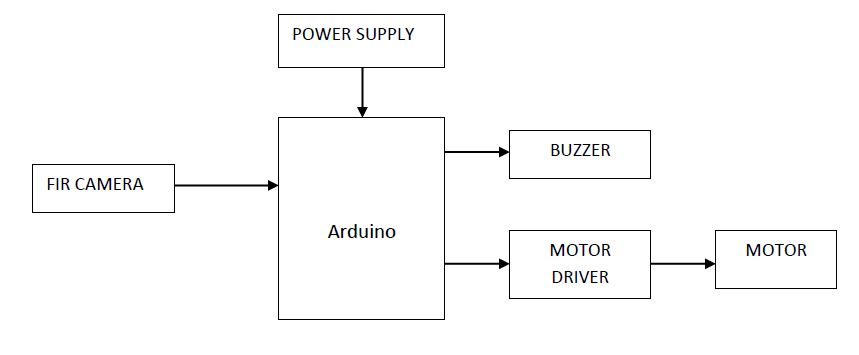Abstract
Modern vehicle is equipped with autonomous features such as pre-collision system or adaptive cruise control to help people perform driving in a safer and more convenient way. Sudden pedestrian crossing is the major reason for many accidents on roads causes’ loss of civilians. To reduce these types of accidents we design early detection of sudden pedestrian crossing for safe driving. This project gives drivers assistance in night times.We focus on detecting SPCs at night for supporting an advanced driver assistance system using a far-infrared.This system includes far infrared camera and microcontroller. This FIR camera scans road from certain distance. When it scans an obstacle it detectsdirection of movement and speed of pedestrian.When the pedestrian crossing road the FIR camera detects the movement it gives the buzzer intimation to the driver for attention and also turn off the motor of vehicle.The video camera technology used in capturing visible light images is mature and cost effective therefore using visible light images for pedestrian detection under ideal lighting conditions.The all the process is controlled by microcontroller.Arranging this type of devices device in vehicles we can reduce collisions between pedestrians and vehicles.
NOTE: Without the concern of our team, please don't submit to the college. This Abstract varies based on student requirements.
Block Diagram

Specifications
Hardware Requirements:
- Arduino .
- FIR Camera
- Buzzer
- Motor Driver
- Motor
- Power supply
- 12v 1a adapter
Software Requirements:
- Arduino IDE
- Embedded C
Learning Outcomes
- Micro controller pin diagram and architecture
- How to install Arduino IDE software
- Setting up and installation procedure for Arduino
- Introduction to Arduino IDE
- Basic coding in Arduino IDE
- About Project Development Life Cycle:
- Planning and Requirement Gathering ((Hardware components, etc.,)
- Hardware development and debugging
- Development of the Project and Output testing
- Practical exposure to:
- Hardware tools.
- Solution providing for real time problems.
- Working with team/ individual.
- Work on Creative ideas.
- Project development Skills
- Problem analyzing skills
- Problem solving skills
- Creativity and imaginary skills
- Testing skills
- presentation skills
- Thesis writing skills





 Paper Publishing
Paper Publishing
